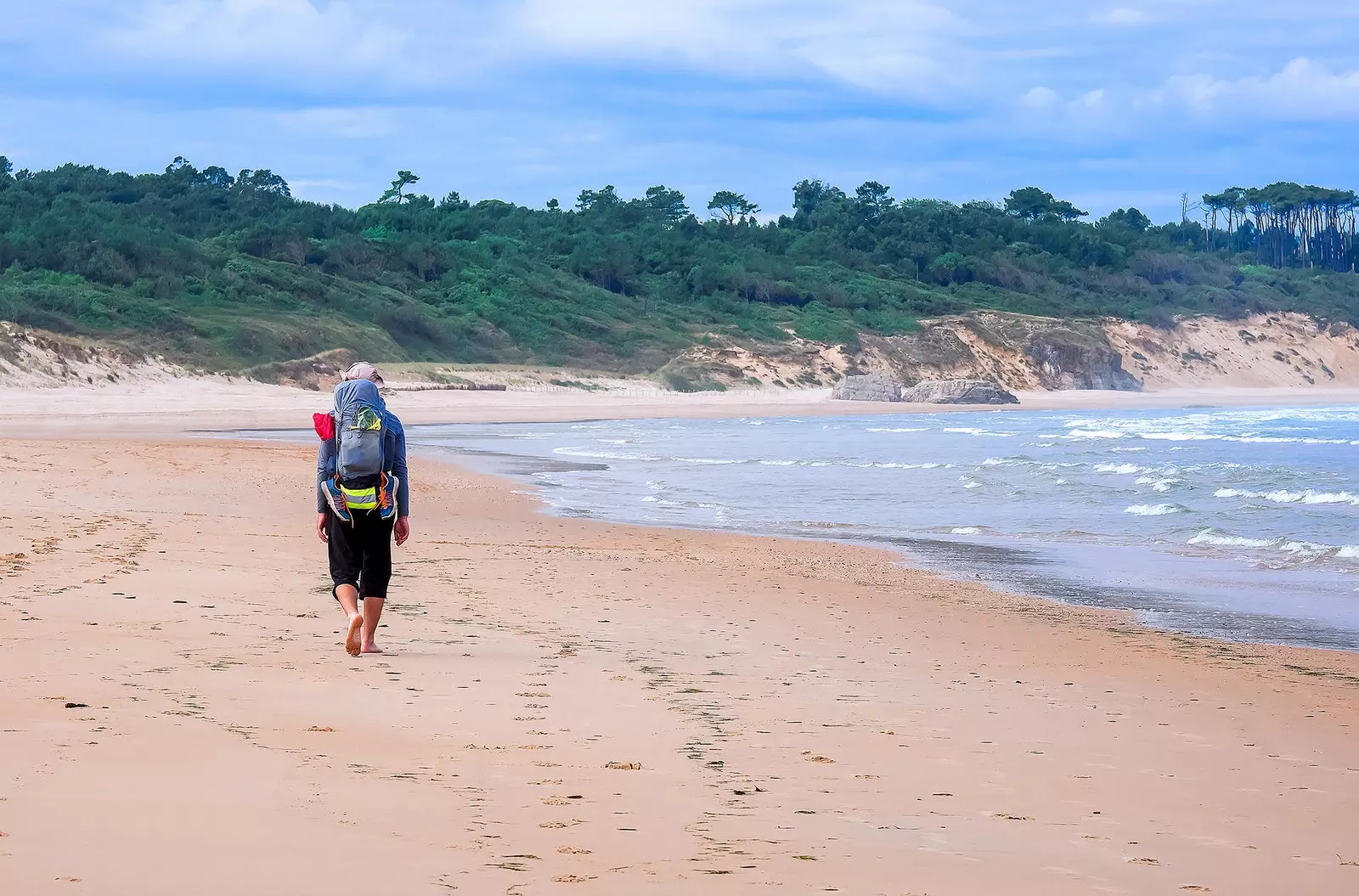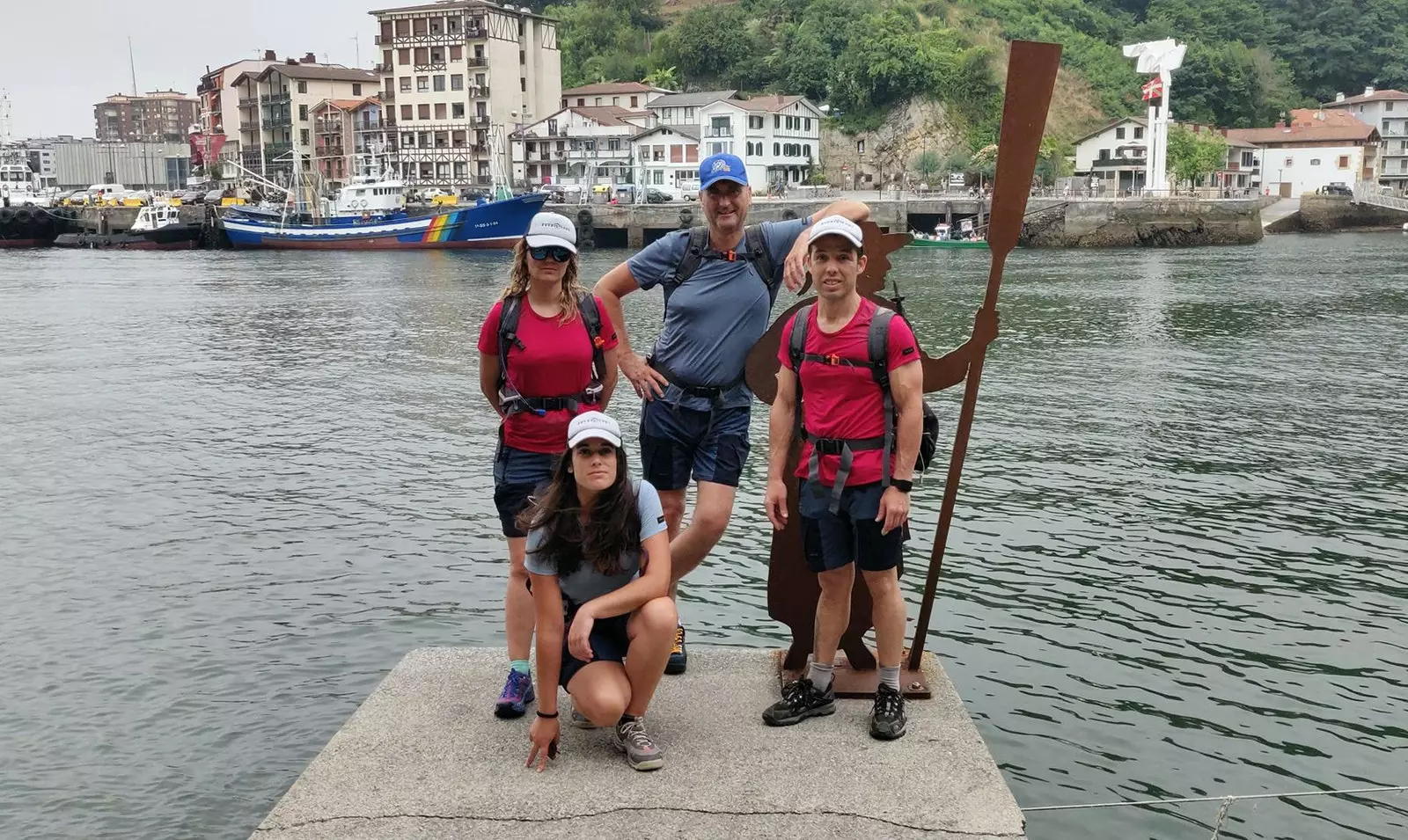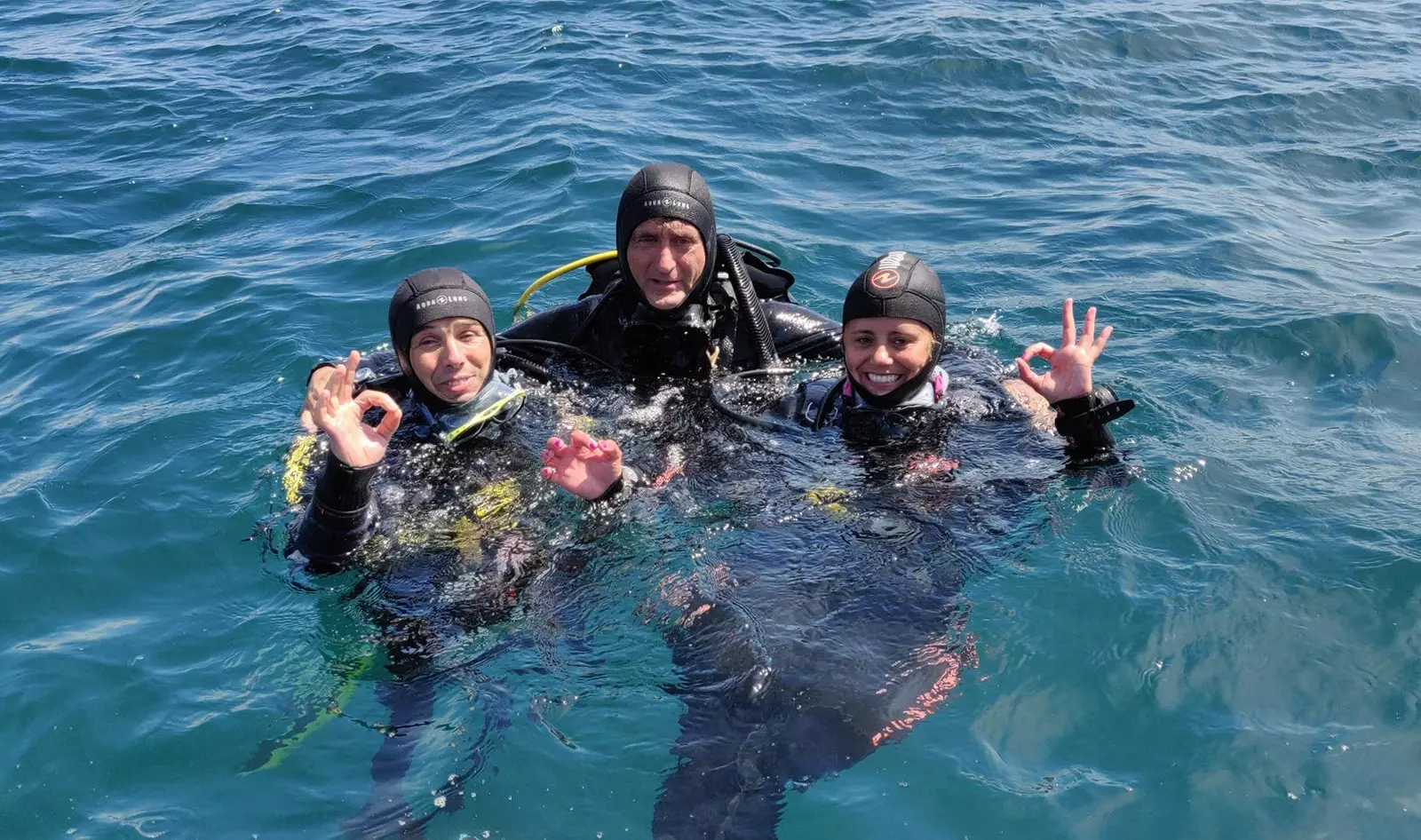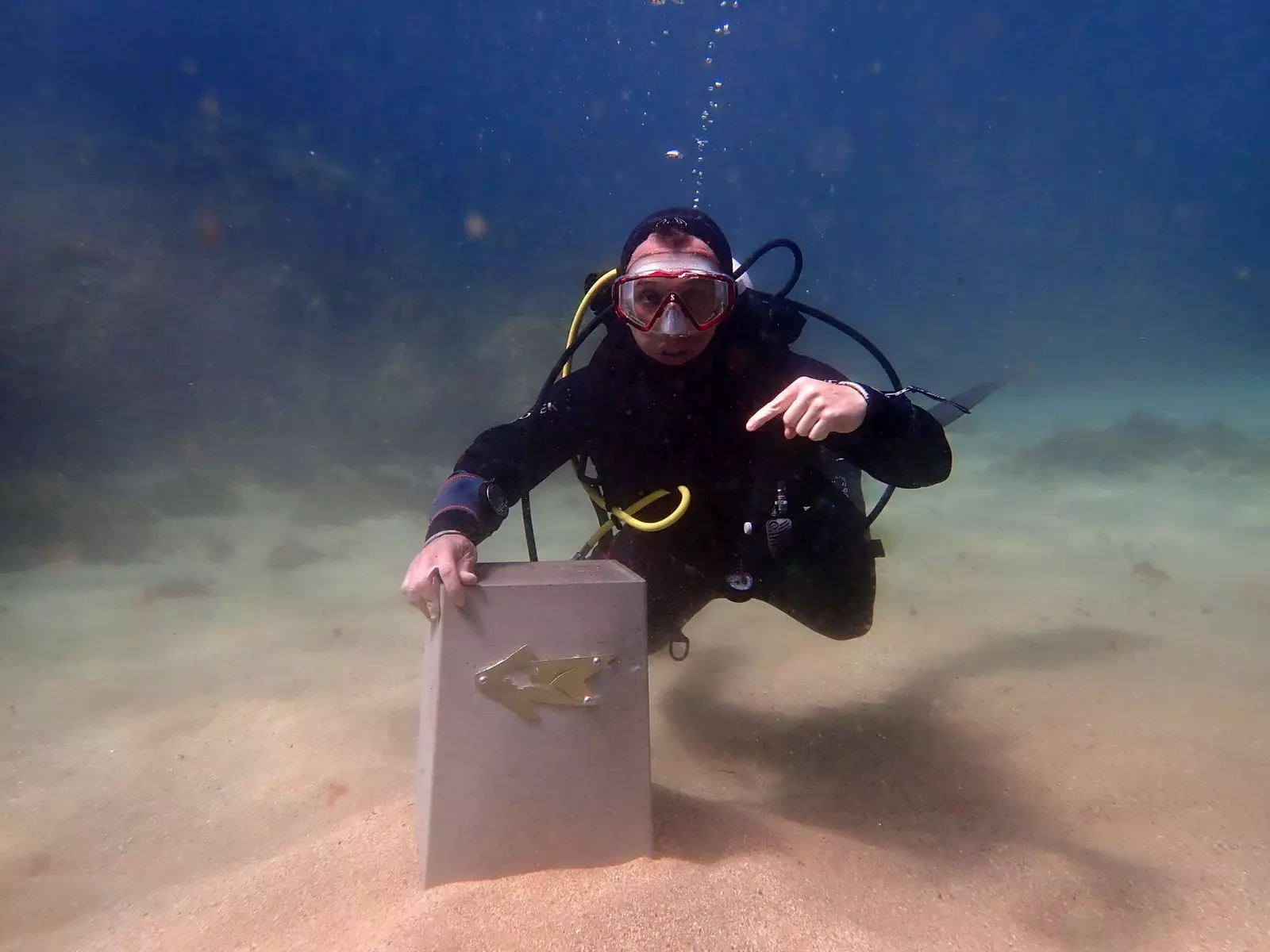
Pilgrimage and diving united in the same Camino de Santiago
Right now, as you read these lines there is four people making a pilgrimage to Santiago de Compostela. And you will think that yes, that it is true, that they are part of the hundreds of people who come to the city of the apostle every day. What you don't know is that they they are doing it while trying a new route, a partially underwater route, the one they want to become the ** Camino de Santiago .**
Adolfo Rodríguez, the ideologue, together with Nekane Fernández, Deva Prendes and Iker Yraolagoitia They have been making pilgrimages on foot and immersing themselves in the waters of the Bay of Biscay since the past July 25 when they covered the distance between Hondarribia and San Sebastián in what was the first of the 21 stages of a path that they hope to conclude 25 or 26 August.

Adolfo, Nekane, Deva and Iker, the participants in this adventure
Until then they will have 34 dives, covered 246 nautical miles and traveled 180 kilometers on foot by four autonomous communities of the Cantabrian coast: ** Basque Country, Cantabria, Asturias and Galicia.**
diving and hiking will shake hands on this new route which, in addition to generating greater and new tourist interest in the area, wants to draw attention to the need to take care of the Bay of Biscay and bring life back to its seabed.
“We are going to start something important and a bit vindictive because What we want is for the Cantabrian Sea to rise again, regenerate marine life”, explains Iker Yraolagoitia to Traveler.es, and then talks about the future.
“In a year or two, depending on what it costs, what we want is for everyone who wants to can do this Camino de Santiago, in stages or the whole way”.
For this, the intention is adapt to future demand pilgrimsub (because you will not be a regular pilgrim, but an underwater pilgrim), creating packages that include diving and hiking or just one of the two options. "We have 23 dive centers that are supporting us and the idea is to get together with them and shape it."

Diving in the morning and pilgrimage on foot in the afternoon
A way that begins by organizing the daily stages. “They consist of two parts. If possible, we dive in the morning. In that underwater part, the diving center leaves us at the dive site. Once done, it takes us back to land”, describes Yraolagoitia.
"As we finished diving we wait on the surface for an interval of three or four hours to rest physically and so that the body is free of residual nitrogen (...) and we do a trekking stage that is usually 12 or 13 kilometers until you reach the next port where you can do another dive.”
If any experienced pilgrim has reached this point of reading, he is probably doing the math and being surprised at the number of hours needed to cover each stage. "There are many hours a day," acknowledges Yraolagoitia. Thus, "There are some days when all we do is rest".
Right now, they are in stage 16 and in this they open an underwater route that any diver can follow They are in the process of being homologated and also placing their corresponding landmarks.
“At the moment, we have only placed two underwater and another on the surface,” waiting to obtain all the necessary permits. They can be seen in the Mouro Island, in Santander; and in Getxo, both underwater and in the marina.

Iker at the moment of placing one of the underwater cairns
And yes, Yraolagoitia makes it clear that “all the material from which the cairn is made is of underwater cement. Marine biologists have made a certificate indicating that we can place it anywhere and it's not going to cause any problems underwater. All materials are harmless to the sea”.
A week after entering the Plaza del Obradoiro, where they hope to arrive with their diving suits on, Yraolagoitia makes a very positive assessment of the experience and as a setback he can only point out that the state of the sea and the rain “is what is holding us back the most, but without stopping completely. It is something that is planned. We know where we are."
